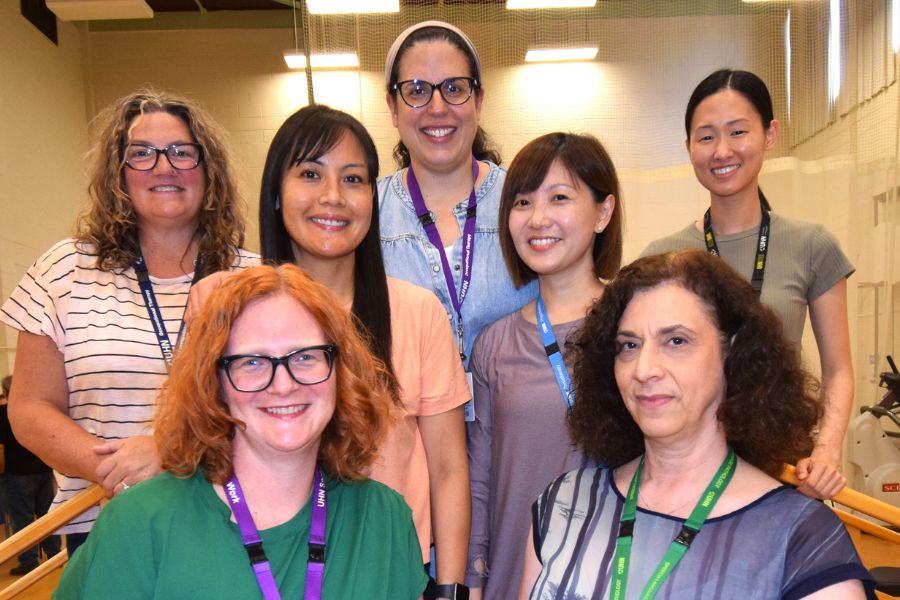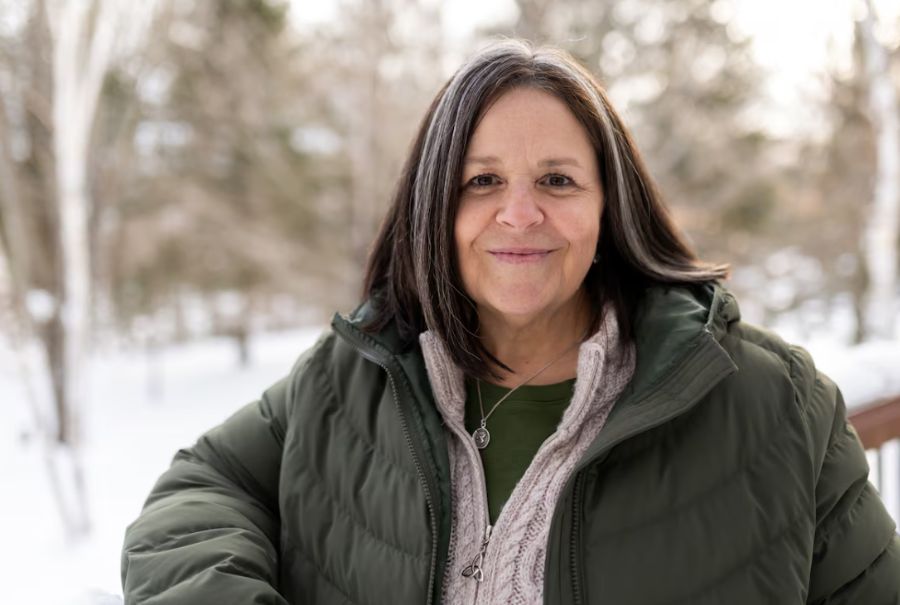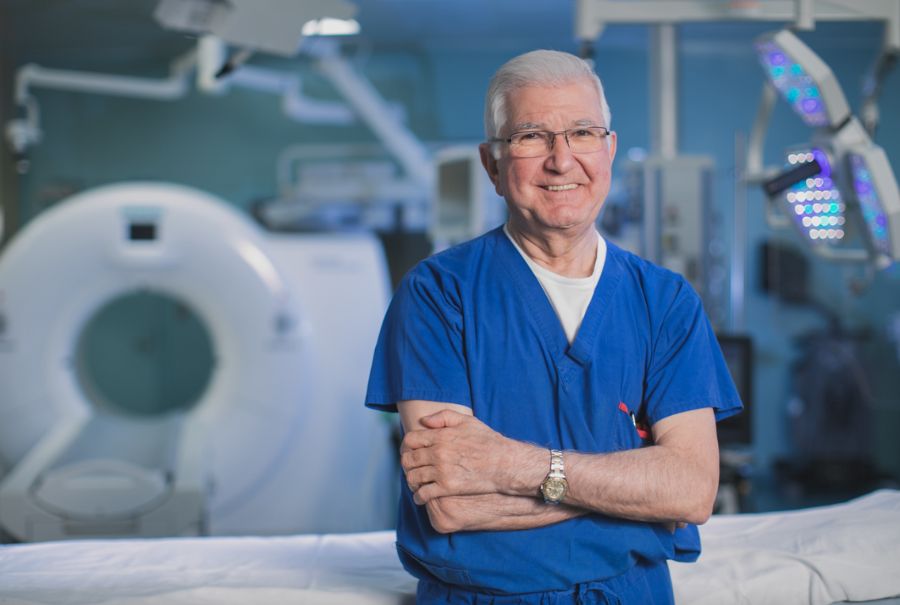Dr. Mitesh Badiwala is developing a game-changing system that will result in more heart transplants.
By Diane Peters
In February 2019, Arnold Schwisberg was halfway down a ski run at Whistler Blackcomb in B.C. when his implantable cardioverter defibrillator went off three times. “It felt like being kicked in the chest by a donkey,” says the Richmond Hill, Ont., lawyer, who was born with hypertrophic cardiomyopathy, a condition that causes heart tissue to thicken.
Fortunately, the skilled skier managed to get himself down the hill. After three weeks in a Vancouver hospital, he returned home and saw his longtime care team at the Peter Munk Cardiac Centre. They had bad news: he was in stage four heart failure and needed a new heart. Unfortunately, there wasn’t one available. While devastated, Schwisberg never gave up hope. “I refused to be put down by this,” he says.
Schwisberg’s situation is all too common. Thousands of Canadians need hearts, but there aren’t enough to go around. According to Dr. Mitesh Badiwala, a cardiac surgeon in the Peter Munk Cardiac Centre at University Health Network’s Sprott Department of Surgery, and Surgical Director of the Heart Transplant Program at UHN’s Ajmera Transplant Centre, between 30 and 40 per cent of hearts that become available for transplant can’t be used due to damage. “Hearts are scarce,” he notes. “We can’t offer them to everyone who would benefit.”
And we need more hearts than ever: heart failure rates are growing in Canada, in part because people are living longer with cardiovascular disease.
Keeping patients alive longer
While surgeons and researchers at the Peter Munk Cardiac Centre want to increase the supply of hearts, they’re also helping keep patients alive longer with implantable cardiac devices. The Centre is a leader in implanting left ventricular assist devices (LVADs), which are powerful mechanical tools that help the heart pump. Sometimes called mechanical hearts, these devices can be used while waiting for a transplant or work in place of a new heart in some cases.
In fact, it was the skill and experience of the Peter Munk Cardiac Centre team that made giving Schwisberg an LVAD – while he waited for a new heart – even possible. His surgery was particularly complex, as the left ventricle of his heart was heavily damaged. Dr. Badiwala and his team had to implant the device in his left atrium, a first-of-its-kind procedure in Canada.

Dr. Mitesh Badiwala is developing a game-changing system that will result in more heart transplants.
Fixing damaged organs
Ideally, everyone who needs a new heart would get one. But that’s currently not possible. Most hearts come from patients who have been declared brain dead, referred to as a neurological determination of death heart. While a stroke or trauma might cause brain death, the patient’s other organs may still be getting blood and oxygen. Often, such patients are on life support, and surgeons can assess the health of their hearts before donation.
Not every donor passes away in this manner; many die after their heart stops. But so-called donations after circulatory death (DCD) are a problem. Not only is it difficult to assess the heart in this case, but after death, the heart will go several minutes without blood or oxygen, which causes damage.
To try to help these hearts, Dr. Badiwala and his team have been experimenting with a specialized Organ Care System, a machine designed to resemble the inside of the human body, where the heart is circulated with blood and nutrients. The machine can extend the time the heart can be outside the body before transplant and allow for better assessment and the likelihood of a successful transplant. The Peter Munk Cardiac Centre plans to do a DCD heart transplant soon using the Organ Care System.
In the U.K., DCD hearts have increased the heart transplant donor pool by 30 per cent. “It opens up an entirely new source for organs for transplant,” says Dr. Badiwala.
Further repairing hearts
Dr. Badiwala wants to repair even more hearts, such as those that have minor damage from, say, early-stage heart disease. To accomplish this, he’s developing a system that helps hearts live outside the body, known as ex vivo. It’s similar to the Organ Care System and is still in the prototype stage, but when it’s done, hearts may be able to live ex vivo for days, which would allow for more interventions.
His tool is inspired by the Ex Vivo Lung Perfusion System, a revolutionary piece of technology pioneered by Dr. Shaf Keshavjee, Surgeon-in-Chief of UHN’s Sprott Department of Surgery. It allows damaged lungs to survive for several hours inside a dome, where they can be repaired. This device transformed transplantation around the world, dramatically increasing the number of lung transplants possible. While Dr. Badiwala’s device is mechanically different, he wants it to operate in a similar way.
Dr. Badiwala is hopeful that between the DCD and this new Ex Vivo System, the Peter Munk Cardiac Centre can increase the supply of hearts, which would lead to more patients overcoming heart failure. “They can go back to living fulfilling lives,” he says.
Schwisberg, who received a new heart in August 2019, would be thrilled to see more people receive transplants, since he knows how life-changing that procedure can be. He now feels better than ever and has even started skiing again. “I can do things I haven’t been able to do in years,” he says.
212 Canadians had a heart transplant in 2019, with 142 patients left waiting on the transplant list. Source: Canadian Institute for Health Information
This article originally appeared in the 2021 Peter Munk Cardiac Centre annual report. Read it here.
Photos by Tim Fraser.


